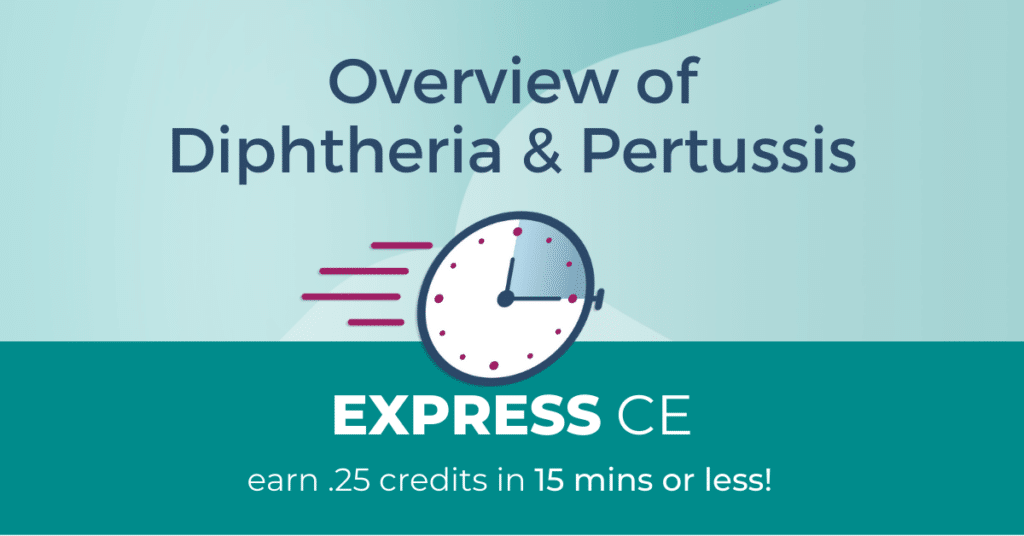Pete Kreckel, microCE, 0.25 hours
One of the most significant demonstrations of the importance of diphtheria antitoxin was its use in the 1925 diphtheria epidemic in Nome, Alaska. Coordinated emergency delivery of this life-saving antitoxin by the dog-sled relay in the harshest of conditions has left a profound legacy in the annals of vaccinology and public health.
This adventure crossed 674 miles, using 20 mushers and 150 sled dogs, and ran from January 27th to February 1st. Airplanes were not reliable at that time, and the nearest port to Nome was frozen shut. Lead dogs Balto and Togo, and the dog-led antitoxin run of 1925 represents a dynamic illustration of the contribution made by non-human species towards mass immunization in the history of vaccinology. This unique example of cooperative interspecies fellowship and collaboration highlights the importance of the human-animal bond in the one-health initiative. [The 1925 Diphtheria Antitoxin Run to Nome – Alaska: A Public Health Illustration of Human-Animal Collaboration – PubMed (nih.gov)]
You can meet the mushers and sled dogs on Wikipedia. Look up “1925 Serum Run to Nome.”
Better yet, there are some short YouTube videos that are enlightening… especially for you dog lovers!

Table of Contents
Diphtheria
Diphtheria is another communicable disease that has been virtually eliminated, thanks to vaccination. It was first described by Hippocrates in the 5th century BC. December 2022: 154 cases of diphtheria have been reported by eight EU/EEA countries: Germany (64), Austria (42), Belgium (18), France (14), Norway (7), the Netherlands (5), Italy (3), and Spain (1). Most of these cases were brought in by refugees. From 1996 to 2018, the United States averaged less than one case per year, due to consistently high vaccination (over 93%),
The causative agent for diphtheria is Corynebacterium diphtheriae or C. diphtheriae which is a Gram-positive aerobic bacillus. The primary mechanism of transmission consists of close contact with respiratory secretions (direct or via airborne droplets) or skin lesions. Diphtheria can also be spread from human to human by fomites such as towels, handkerchiefs, and used tissues. Humans are believed to be the only known reservoir for C. Diphtheriae. Diphtheria has an R-naught value of 2.6 and is highly contagious.
TYPICAL COURSE:
The normal incubation period is 2-5 days. C. diphtheriae has four biotypes: gravis, intermedius, mitis, and belfanti but all biotypes can become toxigenic and cause severe disease. Toxigenic diphtheria bacilli acquired in the nasopharynx produce an exotoxin that inhibits cellular protein synthesis, destroys local tissue, and forms a pseudo membrane.
There are four major complications including myocarditis, polyneuropathies, nephritis, and thrombocytopenia.
non-toxin-producing C. diphtheriae strains cause mild to severe exudative pharyngitis and sometimes lesions, endocarditis, bacteremia, and septic arthritis.
Before we had vaccines, diphtheria was a major cause of morbidity and mortality worldwide, primarily affecting children under the age of 15. Until the beginning of the 20th century, as many as 10 percent of American children developed diphtheria, and 5-10% died from its complications. By adolescence so many kids were exposed to diphtheria, 70 to 80 percent of the urban population was immune from natural infection. 100,000-200,000 cases and 13,000-15,000 deaths were reported annually in the 1920s before vaccines were available.
There are four major types of diphtheria:
- Pharyngeal and Tonsillar Diphtheria: The most common sites of diphtheria are the pharynx and the tonsils. A thick gray membrane covers the throat and tonsils. Infection at these sites is usually associated with substantial systemic absorption of the toxin.
- Anterior Nasal Diphtheria: This looks much like the common cold, due to low absorption of the toxin.
- Cutaneous Diphtheria: This may be manifested by a scaling rash or by ulcers with clearly demarcated edges. This type of diphtheria is most seen in the tropics.
- Other sites: mucous membranes of the conjunctiva and vulvovaginal area, as well as the external auditory canal
TREATMENT:
Antitoxin: Diphtheria antitoxin is a hyperimmune antiserum produced in horses that binds to and inactivates the diphtheria toxin. In 1898 a trial showed that the antitoxin reduced mortality from 7 to 2.5 percent. It must be administered early because it is only effective when the toxin has not entered the cells yet. The antitoxin is only available through CDC and it is only used for respiratory and cutaneous diphtheria.
Antibiotics: erythromycin (Ery-Tab®), procaine penicillin-G (Wycillin®), and oral penicillin VK (Veetids®)are effective treatments for diphtheria and must be administered for 14 days. By killing off the bacteria, toxin release is attenuated.
VACCINATION
Diphtheria toxoid was developed in the early 1920s but was not widely used until the early 1930s. It was incorporated with the tetanus toxoid and pertussis vaccine and became routinely used in the 1940s. Vaccination does not prevent colonization, but reduces transmission by 60%, likely through reduced symptomatic shedding.
Diphtheria toxoid is produced by growing toxigenic C. diphtheriae in a liquid medium.
Diphtheria toxoid is combined with tetanus toxoid as diphtheria and tetanus toxoid (DT) vaccine or tetanus and diphtheria toxoid: Td (Tenivac®) and (Tdvax®) vaccine. Diphtheria toxoid is also combined with both tetanus toxoid and acellular pertussis vaccine as DTaP (Infanrix®) and (Daptacel®) or Tdap (Boostrix®) and (Adacel®) vaccines. Td contains reduced amounts of diphtheria toxoid compared with DT. More than 95% of recipients develop protective antibody levels after 3 doses and booster for infants or 3 doses for adults.
I have had quite a few older patients come into the pharmacy, and said “Hey doc, what vaccine am I supposed to get now that my daughter is going to have a baby next month.” First off, I congratulate them on the new bundle of joy, followed by the information about TDaP. EVERYONE who gets to have direct contact with a newborn SHOULD (OK, MUST) have an up-to-date Tdap!
PERTUSSIS
Bordetella pertussis is a small, aerobic gram-negative rod. A toxin produced by the bacteria causes most of the pathogenesis of the disease. The bacteria attached to the cilia of the respiratory epithelial cells produce toxins that paralyze the cilia and cause inflammation of the respiratory tract, which interferes with the clearing of pulmonary secretions.
The incubation period is quite long, ranging from 4-21 days, and starts with symptoms similar to the common cold. Once the disease enters the paroxysmal stage it becomes evident that the patient is infected with pertussis. Characteristically, the patient might have bursts of numerous, rapid coughs due to difficulty expelling thick mucus from the tracheobronchial tree. At the end of the paroxysms, a long inspiratory effort is usually accompanied by a characteristic high-pitched whoop or barking sound.
Between these attacks, the patient usually does not appear to be very ill. When an attack occurs, the patient becomes very distressed and can turn cyanotic and possibly vomit. These attacks are more frequent at night, with up to fifteen attacks in 24 hours. Seizures and encephalopathy, which are more commonly seen in infants, may occur as a result of hypoxia from coughing, or possibly from pertussis toxin.
TREATMENT:
- Pediatrics:
- azithromycin (Z-pak®),
- clarithromycin (Biaxin®) or
- trimethoprim-sulfamethoxazole (Bactrim®)
- Adults:
- azithromycin (Z-pak®):
- Day-1: 500mg
- Days 2-5: 250mg
- azithromycin (Z-pak®):
- trimethoprim-sulfamethoxazole DS (Bactrim DS®): twice daily
- clarithromycin (Biaxin®) 500mg twice daily
VACCINATION
Whole-cell pertussis vaccines were first licensed in the United States in 1914 and were available as a combined vaccine with diphtheria and tetanus toxoids (as DTP) in 1948. In the 20th century, pertussis was one of the most common childhood diseases and a major cause of childhood mortality in the United States, primarily due to secondary bacterial pneumonia. Before the availability of the pertussis vaccine in the 1940s, more than 200,000 cases of pertussis were reported annually. Since the widespread use of the vaccine began, the incidence has decreased by more than 75% compared with the pre-vaccine era.
DTwP versus DTaP: “What is acellular” pertussis?
The acellular pertussis vaccine (aP) has three or more antigens which provided around 85% efficacy. Its efficacy is similar to the whole-cell pertussis vaccine; however, it declines faster compared to the whole-cell pertussis vaccine. The value of acellular vaccines is in their fewer side effects compared to whole-cell vaccines.
Pertussis is still a problem in that between 2000 and 2017. There were 307 deaths from pertussis reported to the CDC with which children younger than age 2 months accounted for 84.0% of these deaths.
Tdap products
- Boostrix®:
- This was approved in 2005.
- Indications: one dose in adults then use Td for subsequent doses; may be used if over age 65
- Adacel®:
- Its safety and efficacy have not been established for geriatrics (65+), however, do not hesitate to use it if only Adacel® is available.
Tdap
- Recommended once after the age of 19 and then Td is recommended every 10 years
Tdap vaccine can protect adolescents and adults from tetanus, diphtheria, and pertussis. One dose of Tdap is routinely given at age 11 or 12. People who did not get Tdap at that age should get it as soon as possible.
Tdap is especially important for healthcare professionals and anyone having close contact with a baby younger than 12 months.
Pregnant women should get a dose of Tdap during every pregnancy, during the third trimester, to protect the newborn from pertussis. Infants are most at risk for severe, life-threatening complications from pertussis.
Have a great day on the bench!!
Previous MicroCE Articles:
- Childhood Immunizations: Haemophilus Influenzae Type-b & Tetanus
- History of the Polio Vaccine
- RSV Epidemiology & Treatment for Pharmacists
- Ear Infections and Pharmacy Treatments
- Treatment of Glaucoma in the Pharmacy
- Pharmacists Role in Mumps & Rubella Vaccinations
freeCE is the #1 resource for continuing education for pharmacists.






